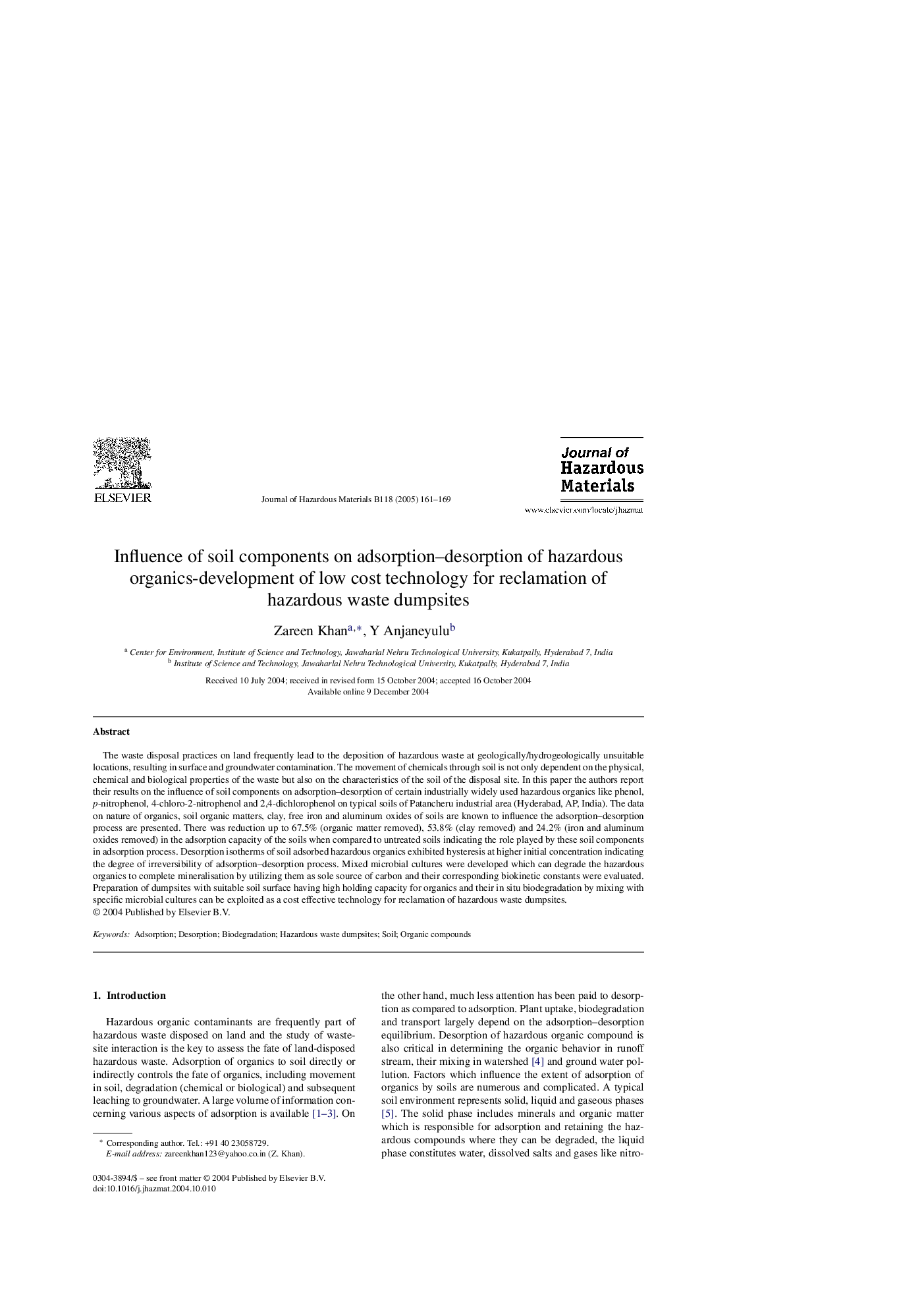| Article ID | Journal | Published Year | Pages | File Type |
|---|---|---|---|---|
| 9674395 | Journal of Hazardous Materials | 2005 | 9 Pages |
Abstract
The waste disposal practices on land frequently lead to the deposition of hazardous waste at geologically/hydrogeologically unsuitable locations, resulting in surface and groundwater contamination. The movement of chemicals through soil is not only dependent on the physical, chemical and biological properties of the waste but also on the characteristics of the soil of the disposal site. In this paper the authors report their results on the influence of soil components on adsorption-desorption of certain industrially widely used hazardous organics like phenol, p-nitrophenol, 4-chloro-2-nitrophenol and 2,4-dichlorophenol on typical soils of Patancheru industrial area (Hyderabad, AP, India). The data on nature of organics, soil organic matters, clay, free iron and aluminum oxides of soils are known to influence the adsorption-desorption process are presented. There was reduction up to 67.5% (organic matter removed), 53.8% (clay removed) and 24.2% (iron and aluminum oxides removed) in the adsorption capacity of the soils when compared to untreated soils indicating the role played by these soil components in adsorption process. Desorption isotherms of soil adsorbed hazardous organics exhibited hysteresis at higher initial concentration indicating the degree of irreversibility of adsorption-desorption process. Mixed microbial cultures were developed which can degrade the hazardous organics to complete mineralisation by utilizing them as sole source of carbon and their corresponding biokinetic constants were evaluated. Preparation of dumpsites with suitable soil surface having high holding capacity for organics and their in situ biodegradation by mixing with specific microbial cultures can be exploited as a cost effective technology for reclamation of hazardous waste dumpsites.
Related Topics
Physical Sciences and Engineering
Chemical Engineering
Chemical Health and Safety
Authors
Zareen Khan, Y Anjaneyulu,
